
Biking In the Rain: Gear, Tips, and Gentle Encouragement
A beginner’s guide to riding in the rain – arrive at your destination safe, dry, and happy.

Photo by Glenn Euloth
Before we get started with the how-to and the gear guide, let’s address the why – why should you bike in the rain? Especially when there are so many other options like buses, trains, private cars, taxis, subways, Car2Go, Modo, Evo, limousines, Uber, that other car-sharing service with the mustaches, walking with an umbrella, walking in a raincoat, walking in a wetsuit, or my personal favorite: not leaving your house at all.
Unfortunately, we do occasionally have to leave our houses when we don’t want to, and if those occasions happen with relative frequency (say, Monday to Friday mornings), those limousine fares are going to add up. So why not bike?
Rainy-day bike commuting does not exactly scream “Fun!” to most people, and that’s understandable. It’s wet, dark, a little more dangerous than riding in the sun, and did we mention that’s it wet? In my early days of bike commuting I too was a fair-weather rider. I would hang my bike up whenever it so much as sprinkled and take the bus – getting soaked just seemed too inconvenient.
But then I began to realize that not having your bike with you is even less convenient than a little water on your face, and that there is magical clothing that will keep you dry in even the most inclement of weather. Things began to change.
First a rain jacket and a ride to work in a light drizzle, then rain pants and a day of errands in a considerable rainfall. I ceased to loathe the wet weather, and began to truly love it. The streets are quieter, the bike lanes are nearly empty, there’s a certain satisfaction in the heaviness of your breath against the freshness of the rain on your face. The next thing I knew it was waterproof gloves, a full-on rain suit complete with booties, waterproof panniers and a leisure ride in a torrential downpour praying for a hurricane. Okay maybe not that hurricane part, but you get the idea.
All of this is only to say that riding in the rain is fun. Honestly, it is. It’s time we changed our collective attitude about biking in the rain to one that embraces the rough weather, because if we’re truly going to shift to a culture of everyday biking, we’re going to need to accept that on some of the days it’s going to rain, and we might still have to leave the house.
So now that you’re excited about the next downpour, let’s address the how. If you already know what you’re doing but you’re just on the hunt for some new gear, feel free to skip ahead for the lowdown on the best rain gear for biking.
How to Bike in the Rain
Riding in wet weather is not all that different than riding in dry weather, but there are a few things to keep in mind to ensure you have the safest ride possible. Here are a few tips and tricks for cycling in the rain:
Be wary of slick spots on the roads
Railroad tracks, manhole covers, or any form of metal are all going to be much much more slippery in the rain. Similarly, piles of leaves and painted lines will be a bit slick, as will anywhere you see gasoline on the concrete as the new rain brings up oil and gas left from cars.
Don’t ride through puddles on roads you’re unfamiliar with
Although riding through puddles seems like a great idea at first, it won’t be quite as much fun when it sends you flying over your handlebars. The reflection on the water can easily disguise potholes or dips in the road, so your puddle jumping (wheeling?) is best left for streets where you’re certain of the contours.
Be highly visible
Lights, lights, and more lights. Reflective clothing if you have it. I tend to dress in muted colors, so in the rain season I keep a small, foldable hi-vis vest in my panniers that I throw over my jacket on particularly dark, rainy days. You can pick up hi-vis vests at any construction outfitters for around $10. More on waterproof bike lights below.
Be extra wary of motorists’ blind spots
Even with all your beams of LED, it’s best to run on the assumption that motorists cannot see you. Rain really obscures vision, so ride defensively. Make eye contact with drivers wherever possible, and stay out of blind spots.
Adjust your braking
Disc and drum brakes work well in wet weather, but rim brakes do not. Give yourself twice as long to come to a stop as you normally would.
Ride more slowly
See above.
Know your limits
Okay, I know I said I like to go for leisure cruises as hurricanes make landfall, but I might have been exaggerating a bit. If you can’t see 10 feet in front of you, it might be best to leave the bike at home. Similarly, if the wind is blowing so hard the trees look they’re about to uproot and fall, it’s safe to assume you won’t have an easy time staying upright on your bike. Taking the bus or those mustache cars every once in a while doesn’t make you any less of an everyday cyclist. And if it’s really thundering down, you should probably just Netflix and chill. Your boss will understand.
Rain Gear for Biking
Okay, let’s be clear, the single most important piece of gear you need for riding in the rain is a good set of lights. Everything else is secondary. Beyond that, I would definitely get a good waterproof jacket and some warm, waterproof gloves, and install some fenders so you don’t turn your spinal column into a dirt road. Everything else follows by point of preference on whichever body part you’d most like to keep dry.
But let’s assume for a moment that it’s pouring buckets and you’re en route to a party in your favorite crepe paper tuxedo. Here’s what you’re going to need to arrive with that thing in one piece:
Cycling Rain Jackets
Cycling rain jackets are optimized to be fully waterproof and breathable while allowing for a range of movement, and they often have subtle (or unsubtle) reflective accents. The thing to be mindful of when choosing one is the hood. If you ride in a helmet, is the hood big enough to fit over it? If you don’t always wear a helmet, is there a cinch at the back to get it out of your eyes when it’s just your head? Importantly, does it obscure your peripheral vision? When you’re trying the jacket on, cinch the hood around your face and try turning your head to the sides to check if you can still see.
Cycling rain jackets can cost anywhere from $100 – $500 USD depending on the brand and style. Arc’teryx, Endura, MEC, Novara, Showers Pass, Mission Workshop, 02 Cycling Rainwear, Patagonia, and Visijax all make excellent cycling rain jackets. Arc’teryx will put a dent in your pocket, but is a seriously good investment for its breathability, fitted hood and commitment to quality. Patagonia, North Face and Columbia don’t make cycling-specific jackets, but make gear optimized for movement and the outdoors, so they would still be good places to look.
If your commute is short and you’re looking for a stylish rain jacket that works well on and off the bike, check out Nau, Happy Rainy Days, Outdoor Research, Vespertine NYC, and Mia Melon. Cleverhood is not a jacket, but a rain cape designed with cyclists in mind. It has reflective piping and hooks to your thumbs to cover your legs, so can replace the need for a full kit on not-totally-soaking commutes.
Cycling Rain Pants
Cycling rain pants are designed for breathability, and often have reflective accents and tapered seams or ankle straps to keep them out of your chain. There are a few waterproof pants on the market designed to be your primary pant, but for the most part the products available are simply over-pants that you throw on over your jeans and remove when you arrive at your destination. On the hunt for stylish rain pants? Wouldn’t bother. They’re rain pants, they’re not meant to be cool.
Rain pants cost anywhere from $60 – $150 USD depending on their breathability and features. Showers Pass, Novara, MEC, Gore Apparel, Patagonia, 02 Cycling Rainwear, and Endura all make cycling-specific rain pants. Anything made of Gore-tex is going to be more breathable if you’re regularly commuting long distances in the rain, but if you’re just looking for a waterproof pant to quickly throw on for short trips or in unexpected showers, something less expensive like the Showers Pass Storm pant will do just fine.
Waterproof bike lights
Your lights won’t do you much good if they spark and die out in a bit of water. Fortunately, most companies these days make their lights water-resistant at the very minimum. Depending on the kind of rain you expect to be riding in, look for something that has a balance between brightness and water-resistance.
Blackburn, Cat Eye, Knog, Lezyne, Light & Motion, PDW, Planet Bike, Sigma, and Nite Rider all make good waterproof bike lights, which range from $60 – $200 depending on the brightness and other features. The Planet Bike Blaze front light which I ride with is advertised as “water-resistant,” but has held up well in a Pacific Northwestern winter and is insanely bright. The Knog Blinder series are all fully waterproof and very bright, and are really reasonably-priced for their quality.
Waterproof Gloves
Alright, your crepe paper tuxedo won’t dissolve if your hands get wet, but it will significantly reduce your enjoyment of your ride. Unless you live in the tropics and ride exclusively in warm rain, all that water is going to make your fingers pretty numb pretty quickly – good, warm, waterproof gloves are a worthwhile investment.
SealSkinz, Barmitts, Endura, Showers Pass, and Pearl Izumi all make waterproof cycling gloves which range in price from $50 – $150 USD.
If you’re not in a position to be buying expensive gloves, throw on a pair of fleece gloves from the dollar store and wear dish gloves over them. It doesn’t look great, but it does the trick.
Bike Fenders
I see some people riding all winter without fenders. I don’t get this. Fenders are pretty necessary for comfortable wet-weather rides. They keep all that water from spinning up your tires and landing all over your pants, back, and face. Fenders are available in materials ranging from metal, to wood, to plastic to bamboo, and range in price from $20 – $150 USD, with most sets sitting around $50.
Planet Bike, Axiom, Portland Design Works, SKS, Blackburn, Evo, Bontrager, Electra, and Soma all make fenders for a variety of weight and style preferences. Blackburn’s Central set are your basic, lightweight, plastic fenders, or if you want to go a little more organic, Planet Bike’s Grasshopper bamboo set is gorgeous and functional for a few bucks more. If it doesn’t rain often and you don’t want to go for full fenders, you can get clip-on fenders for about $20 USD which can be easily attached and removed in minutes, tool-free.
Waterproof Footwear
Gone are the days when wearing waterproof shoes meant looking like you’re dressed for an alpine expedition or a day on the farm. So many brands are making waterproof footwear that you’re sure to find a pair that suits your style.
Chrome Industries, DZR Performance Shoes, El Naturalista, L.L. Bean, Hunter, Blundstone, Sorel, Kodiak, Merrell, and Cougar are all great places to look for waterproof shoes in a range of styles. Even Nike and Converse are getting in on the trend, with Nike coming out with a waterproof sneaker this year, and Converse releasing a rubber version of their iconic Chuck Taylors.
If you just want to wear your regular shoes, you can get waterproof shoe covers that you can just take off and pack away when you arrive. Showers Pass, Gore and SealSkinz make cycling-specific shoe covers for $40 – $60 USD, all of which are designed to function with clip-in road bike shoes.
Alternatively, there is always good old rubber boots from the hardware store and you can just pack your inside shoes in your bag.
Waterproof Panniers, Backpacks, and Bags
It’s all well and good if you arrive at your destination dry, but the enthusiasm will be short-lived when you realize you’ve put your laptop through nature’s wash cycle. So whether your preference is panniers, backpacks, or messenger bags, finding one that’s waterproof is key.
Ortlieb, Vaude, Detours, Banjo Bros, Altura, Green Guru, Novara, Chrome Industries, Thule, Rickshaw, Timbuk2, Two Wheel Gear, and Swift Industries all make waterproof panniers, and you can similarly find waterproof backpacks and messenger bags at Osprey and Mission Workshop, as well as most of the brands listed above.
Cycling Glasses, or, how to not get water in your eyes
Honestly, for commuting, I wouldn’t bother with cycling glasses. A lot of people like to ride with them on wet days because it keeps the rain out their eyes, but I’ve found it keeps the rain droplets stuck to the lenses right in front of my eyes, which seems only marginally better if not worse. But if you want cycling glasses for the rain, go for clear or yellow lenses to retain as much light as you can. Smith, Oakley, Tifosi, and Native Eyewear all make good cycling glasses, and they range from about $60 – $300 USD. You could also buy safety glasses from a construction outfitters or science lab supplier for a fraction of the price.
Moving away from glasses, a reader wrote us earlier this year with her method to avoid water in the eyes, which I’ve since adopted and highly encourage. Julianna says she just wears a baseball cap, which keeps the rain out of her face, her makeup intact, and has the added bonus of forcing the hood to turn when her head turns so she gets better peripheral vision. The downside is hat hair, but hey, nothing’s perfect.
So what are you waiting for?
Other than the rain, of course! There are a bunch of great products on the market to make your rainy-day bike commuting as comfortable as it possibly can be, but the most important thing (besides the bike), is just deciding to do it. Biking in the rain is great, it gives us the chance to connect with our environment and allows us to continue to do what we love despite the weather. And at the end of the day, it’s just a little water right?
Hilary Angus is the Online Editor at Momentum Mag. She gets everywhere by bike in the seemingly endless rains of Vancouver, BC. @HilaryAngus
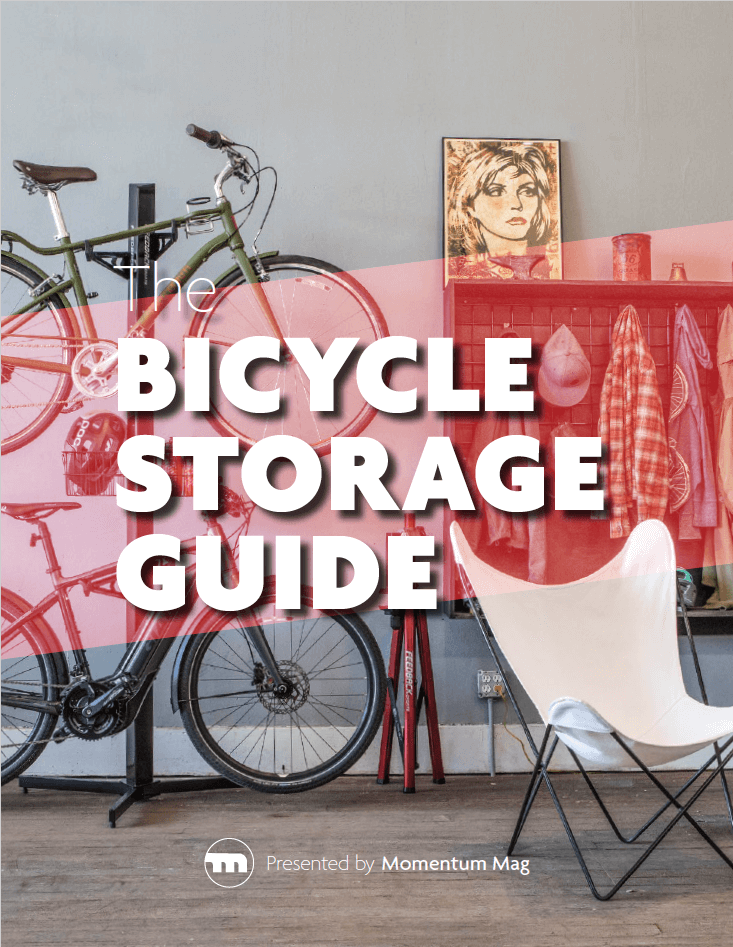
39 Comments
Autumn Gear Guide
Find inspiration in our Gear Guide that will keep you out on your bike through wind or rain.
Download Now
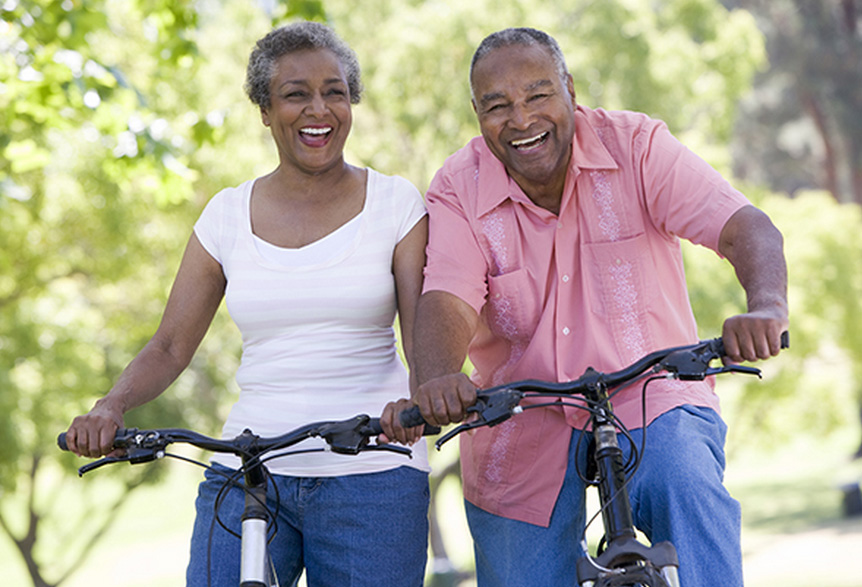
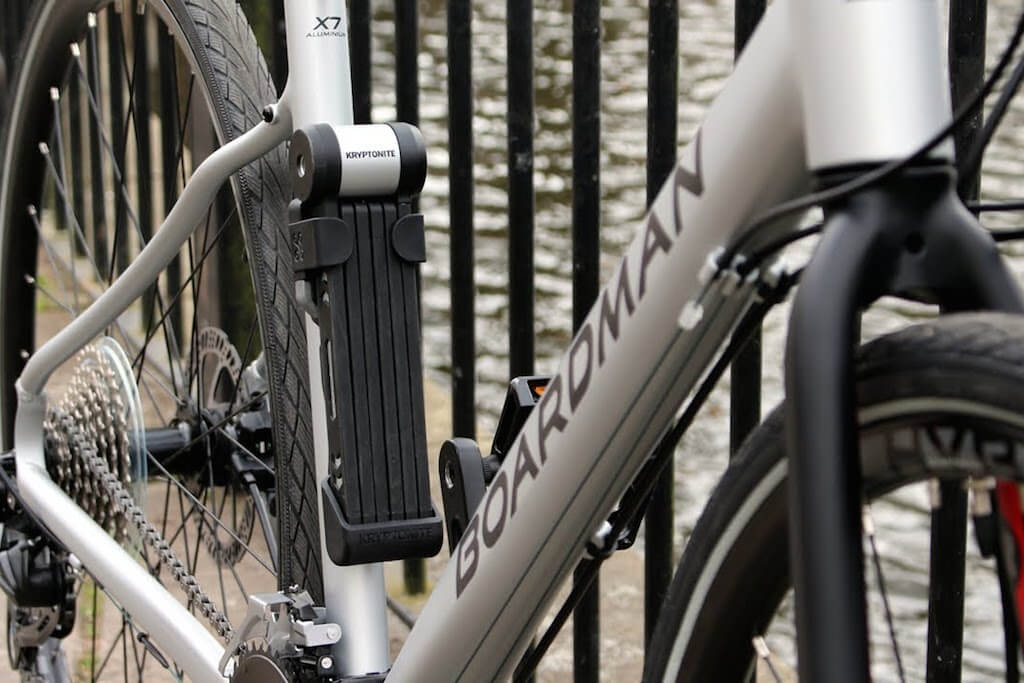


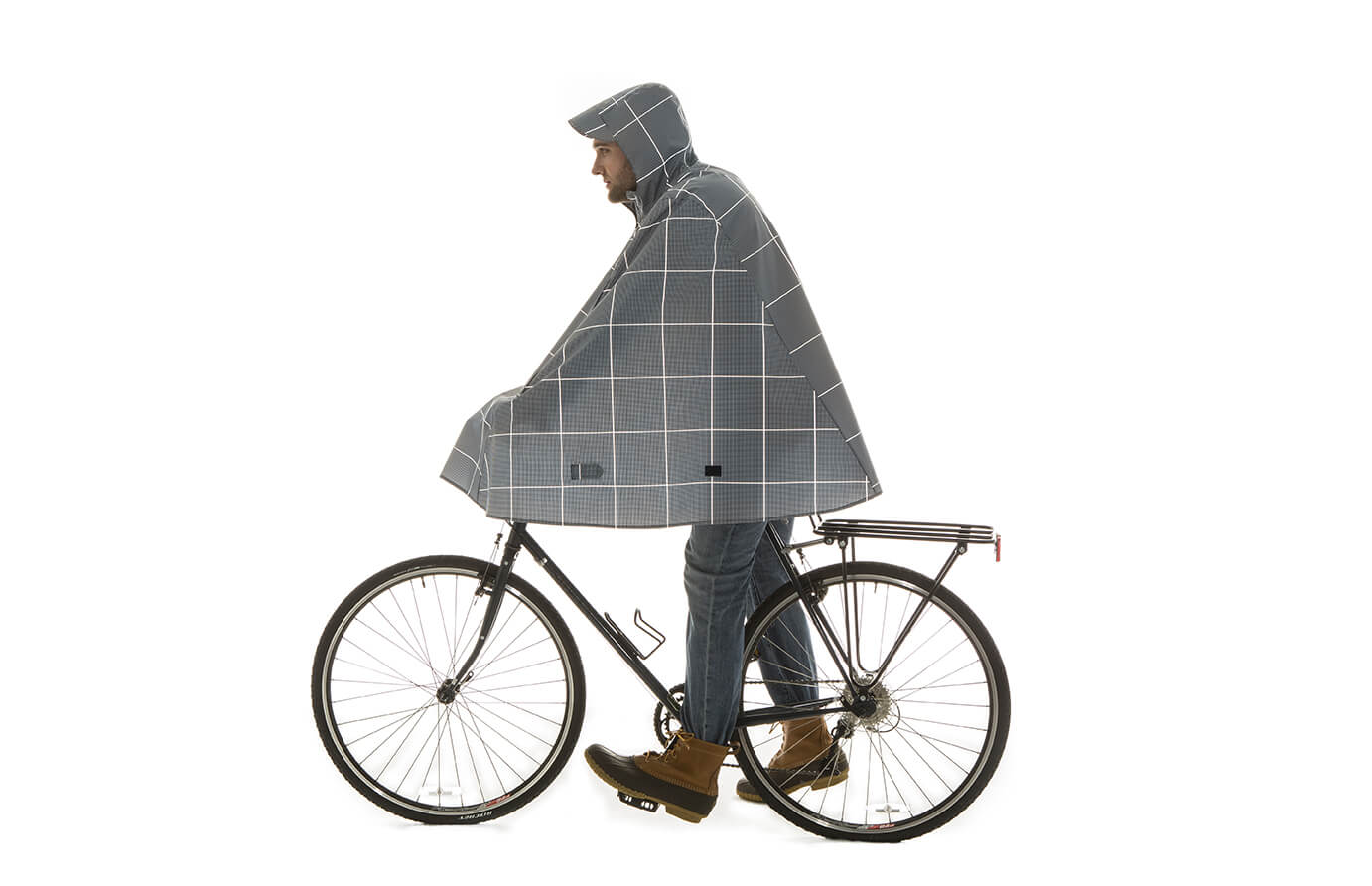

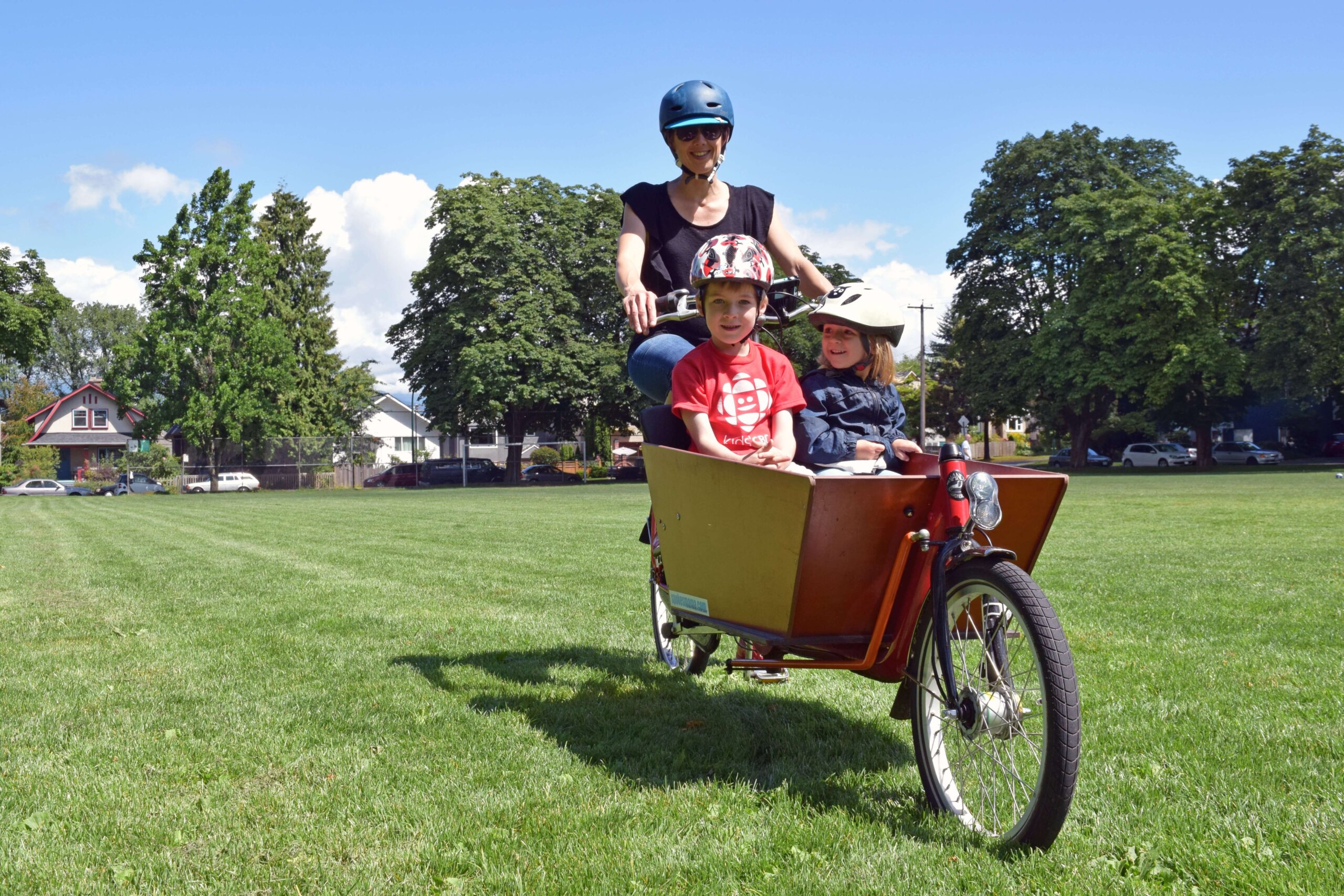
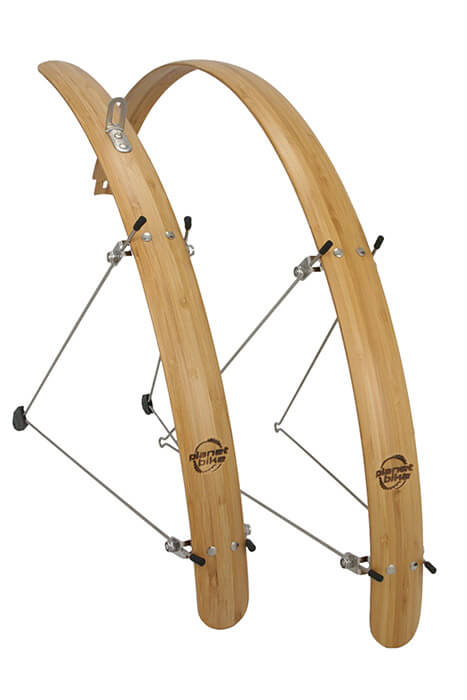

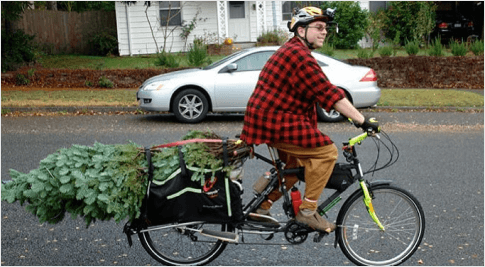
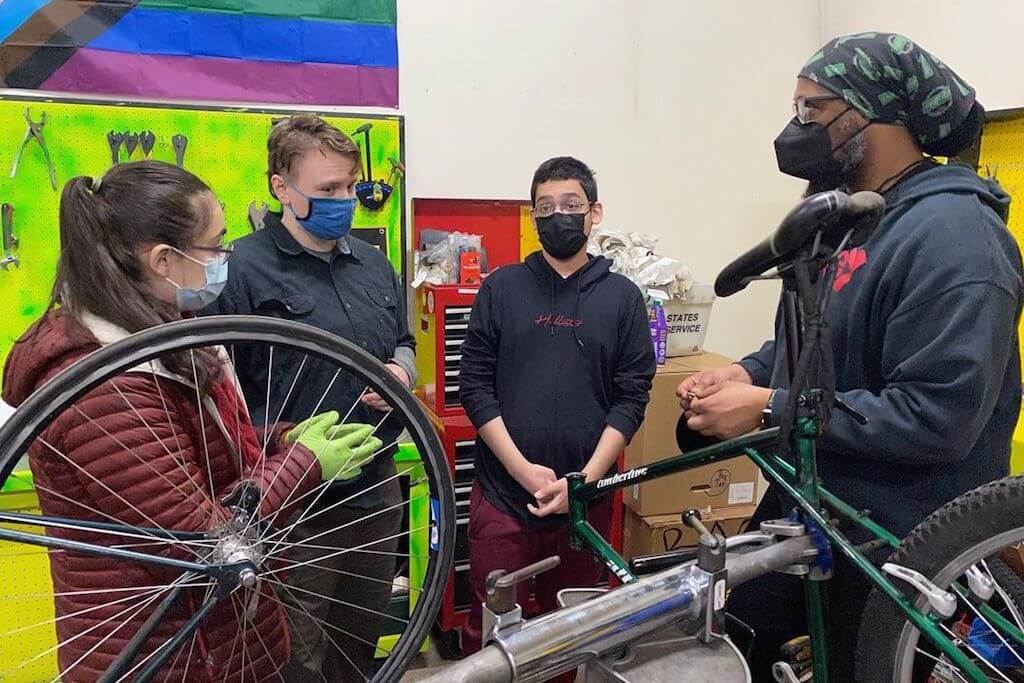
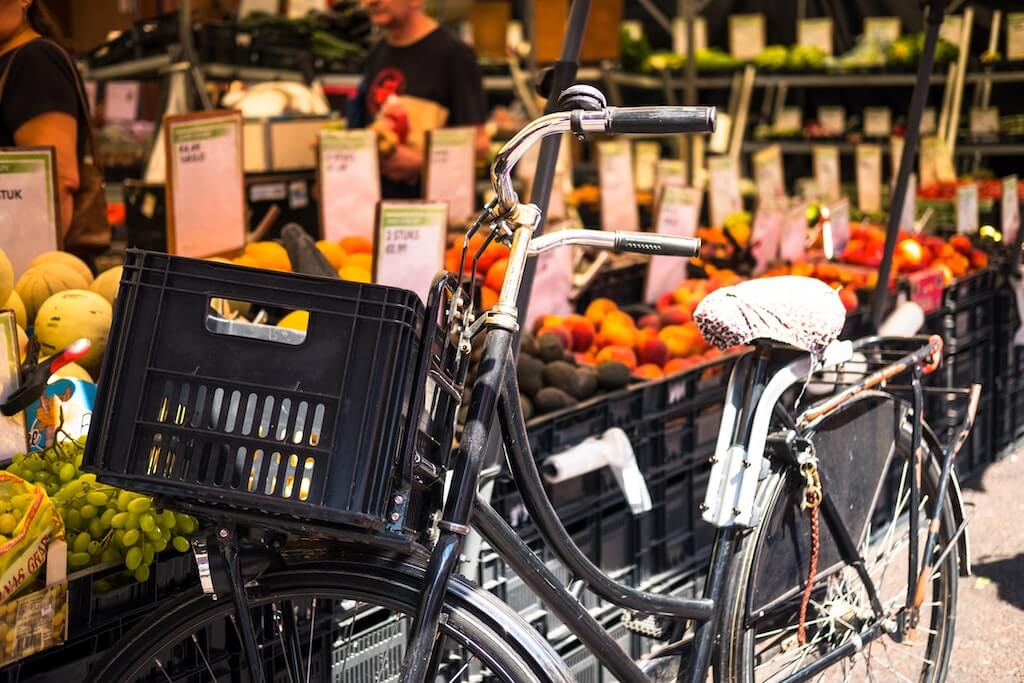
Excellent article !! Very well written, practical, has good links, a good ‘feel’ to the article. Encouraging. Needed.
Can you please make one for non-helmeted cyclists, my 15 year old daughter and I bike often in the Seattle area, and when we put rain hoods on it blocks part of our view on the road.
I am preparing for full time e-bike commuting in Melbourne, Florida, lots of rain. I will be using a Trek Super Commuter+ 8S as the basic bike. I am looking for suggestions on waterproof panniers for this bike as well as additional storage for work gear. I suspect I will be mounting a front rack as well and am seeking maximum waterproof storage. Any input or suggestions are truly appreciated
Best regards,
I took a baseball-type hat, cut the front panel and brim off, and glued it into my brimless helmet. Instant shade, rain protection, and the front panel from the hat helps keep sweat off my forehead, too.
I just use my baseball hat, it keeps the rain from ruining makeup and it makes it so my hair doesn’t get wet
Yes, I always have a problem with hoods, my rain jacket always covers my eyes? I’m thinking of just switching to a hat and wearing the rain jacket but not the hood. What jacket do you recommend?
If the manufacturers would only “get it,” they could sell so much more of this stuff and get so many more cyclists on the road in inclement weather. The author advises that a raincoat costs between $100 and $500, as if the lower figure were something the average rider would even CONSIDER. I could never see myself spending more than $20-30 on a “good” raincoat, and I haven’t spoken with a single commuting cyclist that feels any differently.
Lights are another thing altogether because you use them every day. I own about $100 worth of very effective lights and, despite being thoroughly convinced that these are absolutely necessary for my safety, it was a hard sell. But $100-500 for a piece of plastic to keep me dry the few days a year I would commute in the rain? Are these guys delusional? I have a $6 Coleman emergency poncho that serves me just fine on those days!
Well, it depends on where you live and how often you ride in the rain. Does someone in San Diego or Phoenix need an expensive rain coat? Probably not. I live in Portland, OR and commute on my bike every day. Between Oct 1st, 2016 and April 30th, 2017 we had 145 rainy days (http://www.oregonlive.com/weather/index.ssf/2017/04/portland_metro_wednesday_weath_58.html), so you bet I have a $300 raincoat – and so do most people around here – not just for bike riding, just for being outside
i have been bike commuting year round in Portland Or. for the last 16 years. A $300 raincoat sounds insane to me. Just get a decent shell and layer underneath it. Waterproof gloves at Costco for about $15. My jacket and pants are both Columbia Sportswear and together were under $80. I prefer to wear my rain jacket hood under my helmet unless it is not raining hard and then I just leave it hanging out the back .
Here is a better poncho, I believed in it so much I bought two! Works well, and doesn’t get out of control in wind! The boncho…
https://www.kickstarter.com/projects/boncho/boncho-the-bike-poncho
For footwear, the Splats from Rivendell are a fabulous 90% overshoe solution – simply lightweight stiff fabric that fits over the top, and keeps your shoes dry and splatter free. These are easy to carry along on a dry morning, and just put on when needed. In a true downpour you will want more, but for most situations these are perfect.
My goodness my 13 daughter biked to school today without a raincoat or hat, i don’t know how she does it. I always bring a hat or raincoat and she can go without. She doesn’t wear a single thing when I do it my hair gets really wet. I hate it when Im biking and i forget a hat so I show up to work with my hair wet as heck. But she can just do it. Whats the secret
+1 on raincapes. They are my default choice as they eliminate the need for rain pants (if you have fenders) and they provide much better ventilation than a rain jacket. https://jnyyz.wordpress.com/2016/08/25/raincape-comparison-boncho-cleverlite/
Very nice and usefull review. Any knowledge about a highly visible quick step-in rain overall in e.g. GoreTex of is this to be invented ?
Not one word about tires?
Tires would have been a great addition. Thanks for mentioning it. Hope this helps: https://momentummag.com/are-studded-tires-right-for-your-winter-ride/
How much maintenance to the bike ( Chain / gears ) will be required?
What about the type and makers of good winter / water type tires?
Hi Charles! Hope this helps: https://momentummag.com/are-studded-tires-right-for-your-winter-ride/
The best rain gloves I’ve ever owned are rubber dish gloves, and they cost a couple of dollars. Pair them with light liners to absorb any sweat (‘Magic Gloves’ from a dollar store work well) and you’re good to go all winter long.
I’d never thought of wearing mine on the bicycle. At Dollarama, the most sturdy ones are sold with tools and stuff, not sponges and dishrags. But it is true that the “dish” kind are often bright yellow or pink and very visible for signalling.
On my commute, where I change upon arrival, I’ve stopped worrying about waterproof clothing, unless the temperature is below 10c, because I’d rather be washed by rainwater, than in the rain gear greenhouse.
If I’m wearing contacts, instead of glasses, I wear a cheap ($5-10) pair of safety glasses. My optometrist says she’s seeing quite a few cyclists that have calluses, on there eyes, from the wind and dirt.
Not bike-specific gloves, but these came recommended as cheaper waterproof gloves, and have served me well in my first winter of cycling in Vancouver: http://www.mec.ca/product/5034-328/mec-h2o-2mm-gloves-unisex-unisex/
unlined Crocs, especially Work Crocs (no holes) work well for me in the rain. Socks optional (I HATE wet socks!) . Crocs don’t absorb water at all & dry quickly.
Full finger Mechanics gloves from Harbor Freight are a good choice for rain gloves. They are NOT waterproof but will keep your hands warm in coolish weather.
A coated nylon rain shell with a hood is good enough for a cycling top. Coupled with similar rain pants over jeans or MEC Rad nylon pants. I have often considered a cycling-specific rain jacket but have balked at the cost.
My last rain jacket was cycling/exercise specific, and it came with under-armpit zippers (“pit-zips”). I love this option vs basic rainwear. I have not been willing to spend the $$$ for goretex, but my impression is that any waterproof fabric will lead to a lot of sweating underneath beyond about 2 miles.
Helmet compatible hoods go UNDER the helmet. Who cares if the helmet gets wet. Putting the hood over top,you compromise visibility and freedom of movement of your head, and the whole open front acts as a scoop for wind and rain. The rear drawstring pulls the hood tight around your skull so that it fits under the helmet while the front drawstring frames your face keeping wind and rain out with maximum visibility. Properly adjusted, the helmet fits over it almost like you aren’t even wearing a hood, you have full peripheral vision, and full freedom of movement for your head. If you go look at reviews of various helmet compatible jackets, you’ll see complaints from people trying to fit it over top, and that’s because it’s intended to be worn under the helmet. The mistake is understandable, but the misconception needs to be addressed.
Excellent list and details. Obviously an experienced wet-weather cyclist. My 27+ years of rain cycling experience offers this two cents:
1. Visibility is one of the most important points, and the correct colors enhance visibility greatly. You get exactly ZERO points for fashion — don’t choose dark or earth tones. Stay alive by wearing
– hi-vis yellow/green, orange, or pink
– if you can’t find those, brilliant yellow is acceptable
2. Gore-tex is not as breathable as vendors say it is. A good coated nylon with many air vents is better, but Gore-tex will last much longer (w/p coatings wear/wash off nylon and must be re-applied occasionally)
3. Rain in the eyes? Cap’s a good idea; also a helmet with a long visor — keep it’s lower rim within an inch of your eyebrow, which is where it should ride anyway
4. Most “waterproof cycling gloves” aren’t. They resist water for 20-30 minutes at most. They typically keep your hands warm when wet, but they get uncomfortably soggy if your commute is long. I use a hardware store chemical glove, with a warm liner glove inside (I like your dish gloves idea, too)
5. Feet. A matter of choice, but best for me is layers of synthetic or wool socks, covered with waterproof socks, and some good cycling sandals. This setup dries very quickly. Most shoe covers either aren’t tall enough, don’t fit over large shoes, allow shoes to fill up with water, and/or depend on being clipped in — they haven’t worked for me
6. Fenders — the front one is as important as the back one — make sure it terminates close to the ground. It helps to have a mud flap on the bottom — that keeps much of the gunk off your drive components.
7. Having an inexpensive rain bike is a good idea — with 7- or 8-speed rear cassette. Because component wear is accelerated in rain, you’ll want parts that can be replaced cheaply. Learn how to clean, lube, and replace your chain & gears. An internal hub might be a good idea too, but learn how to keep it up
Those people in the Dutch picture are NOT wearing loud colours. You can achieve visibility with reflective tape or a reflective vest that you can strip off when it isn’t pouring rain. People have a right to life AND to dignity.
But those Dutch people in the video also are in a country where large numbers of cyclists are part of the regular traffic flow. They have the luxury of not needing to dress up like a neon sign. Those of us in most parts of the United States must maintain our dignity by staying alive in a car centric culture, which doesn’t expect people on bikes during rainstorms. Thus, the bright colors.
I agree with Ken about “breathable” fabrics such as GoreTex, not being the best to ride in. Although the “real” GoreTex is better than the copies you find in a lot of apparel. I can’t wear anything claiming to be “waterproof” or coated. I will become way too hot and soaking wet from sweat underneath. I find a “windproof” fabric – either soft-shell or fleece, does great for biking in wet weather. The windproof fabrics have slits cut in the membranes that breather better than a GoreTex like “waterproof” fabric. I find I can ride up to two hours with a windproof fabric and not soak through.
Very nice text, thank you very much!
I would also mention Georgia in Dublin (http://www.georgiaindublin.com/) for stylish ladies cycling rainwear. I have no affiliation — just like their stuff.
Great post! Excellent writing and so much information – but I particularly love the fact that you leave the many options to us to look up, and the video also a good touch. Thanks, I will definitely share this!
Comments are closed.